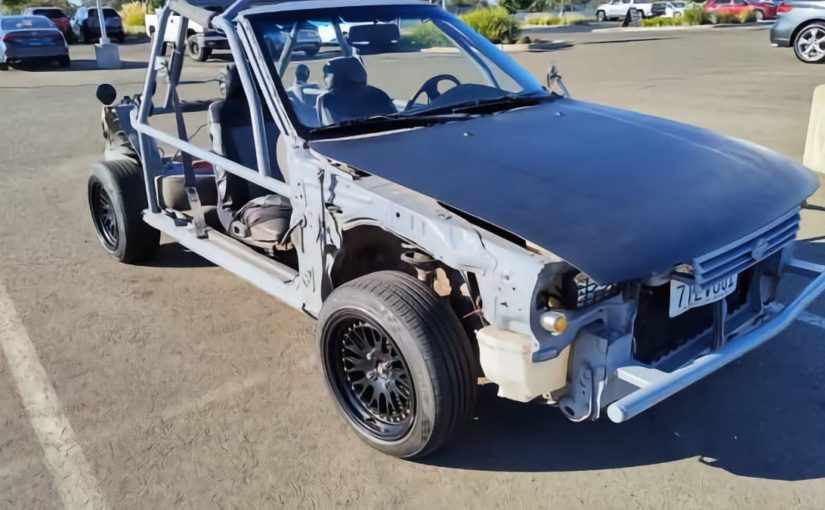The simplicity of the slant six engine design, its relatively modest output, and the quality of the main rotating parts (including a forged crankshaft) as well as the effective cooling and lubrication systems, meant these engines lasted forever. Find any “most reliable engines of all time” list on the internet, and the Chrysler slant six will be on it.
Advertisement
This is why I bought my 1965 Plymouth Valiant. I want a winter car to replace my Lexus LX470, which is a swell car, but worth too much for me to let rust out on Michigan’s salty roads, and a bit boring and thirsty, with its four-speed slushbox and ridiculous curb weight. I want something fun to drive in the winter, and few things are as fun as a three-speed column-shift manual transmission.
Advertisement
I spotted the car on upstate New York’s Facebook Marketplace with an asking price of $2,835. Andrew and his wife Sydney drove me over an hour to a Christian bible camp, where the man who runs the place showed me his wasp-infested Valiant, which he swore had only 51,500 original miles (this, I later learned when going through the service records, was false; the notes clearly show the vehicle eclipsing 100,000 miles).
The man was nice (to me, not the wasps; he murdered them viciously — odd behavior for someone who runs a bible camp, but also maybe not), but didn’t know much about his car. He’d only owned it for a few years, and couldn’t tell me whether first gear is synchronized (it is not). Is it a bit alarming that he didn’t know the answer to that? Yes, a bit. I’ll change the transmission fluid as soon as I can to drain out chunks of those first gear teeth.
Advertisement
The test drive went well; motor fired up quickly, and the transmission was quiet. I handed the seller $2,000, he signed his registration, and I was off. Well, after filling the motor with a quart of oil, the radiator with nearly a gallon of coolant, and the single brake fluid reservoir with a splash of DOT 3.
Advertisement
Following Andrew’s Mitsubishi Montero, I drove the Valiant 60 miles from the bible camp to my friend’s house, and fell head-over-heels in love. The three-speed column-shift transmission is sublime; it’s fun to shift, and goes into all three gears (plus reverse) smoothly. The smooth-revving slant-six is just incredible, offering plenty of torque, and never stuttering under acceleration. Sure, there’s some vibration under acceleration; neither the fuel gauge nor the coolant temperature gauge works; and there’s plenty of rust on the floorboards, doors, and quarter panels (the main unibody rails are solid); but I don’t care. This regular old 1960s Plymouth sedan — with its blue interior filled with two three-person bench seats — has my heart.
Advertisement
Well, for now, that is. This machine still has to get me 650 miles from upstate New York to Michigan; only then will I know whether it deserves the title of “Most reliable American car ever.”






